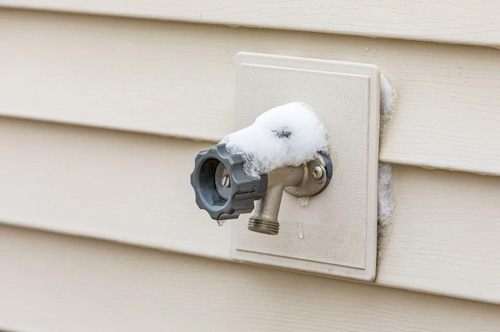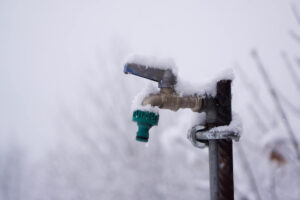As the winter season approaches, it’s important to take steps to winterize your home’s plumbing system. By taking the time to properly prepare your pipes and fixtures for colder weather, you can avoid costly repairs and water damage that can result from freezing temperatures. Here are a few tips on how to winterize your plumbing system.
Steps You Can Take to Winterize Your Plumbing
Insulate Pipes in Unheated Areas
One of the most common issues that homeowners face during the winter months is frozen pipes. To prevent this from happening, you should insulate any exposed pipes in your home. This includes any pipes located in attics, basements, garages, or other unheated areas of your home as well as any outdoor spigots that may be attached to an exterior wall. There are a variety of insulation products available on the market designed specifically for this purpose. Make sure that you use one suitable for use on the type of pipe you have in your home (e.g., PVC or copper).
Seal Up Cracks & Gaps Around Doors & Windows
Cracks and gaps around doors and windows can allow cold air into your home, which could potentially cause your plumbing system to freeze up if not addressed. Using caulk or weatherstripping around these areas is the best way to ensure that cold air stays out and warm air stays in. This will also help keep drafts out and save money on energy costs throughout the winter months.
Let your Faucets Drip
One way to help prevent your pipes from freezing is to let your faucets drip. This may seem counterintuitive, but running water is less likely to freeze than still water. The movement helps to keep the water moving and prevents it from sitting in one spot long enough to freeze solid. In addition, leaving your faucets slightly open can help to relieve pressure on your pipes, which can further reduce the risk of a rupture. So if you’re worried about your pipes freezing this winter, consider letting your faucets drip. It could end up saving you a lot of time, money, and headaches.
Drain Outdoor Faucets
If you have an outdoor faucet or hose bib, make sure that it is drained completely before the temperature drops too low. This can be done by turning off the valve on the inside of your house and then opening up the faucet until all of the water has been drained out of it. It’s also a good idea to disconnect hoses from outdoor faucets during the winter months so they don’t freeze either.
Signs that you Have a Frozen Pipe
A frozen pipe can lead to a lot of expensive damage, so it’s important to be able to recognize the signs that your pipes may be in danger. One telltale sign is if you turn on your faucet and only a small stream of water comes out, or if the water pressure is significantly lower than normal. This can be an indication that the water inside the pipe is starting to freeze. Another sign is if you notice any water dripping from the faucet; as the water inside the pipe freezes, it expands and puts pressure on the sides of the pipe, which can cause a small leak. If you see these signs, it’s important to take action immediately.
Prepare for Winter with Hague Quality Water of Maryland
Homeowners should take precautions with their plumbing during winter months so they don’t end up with expensive repairs down the line due to freezing temperatures and other hazards associated with cold weather conditions – like frozen pipes or damaged water heaters. With proper maintenance and preparation, you can rest assured knowing that your plumbing system is ready for whatever comes its way!
Hague Quality Water of Maryland is a leading provider of water solutions, from water testing and treatment to full-service plumbing. We can address any issues that you may have with the water in your home or business. If you are worried about frozen pipes this winter, our team is here to help ensure that your home is ready to take on the cold. Give us a call today at 410-757-2992 to learn more!




